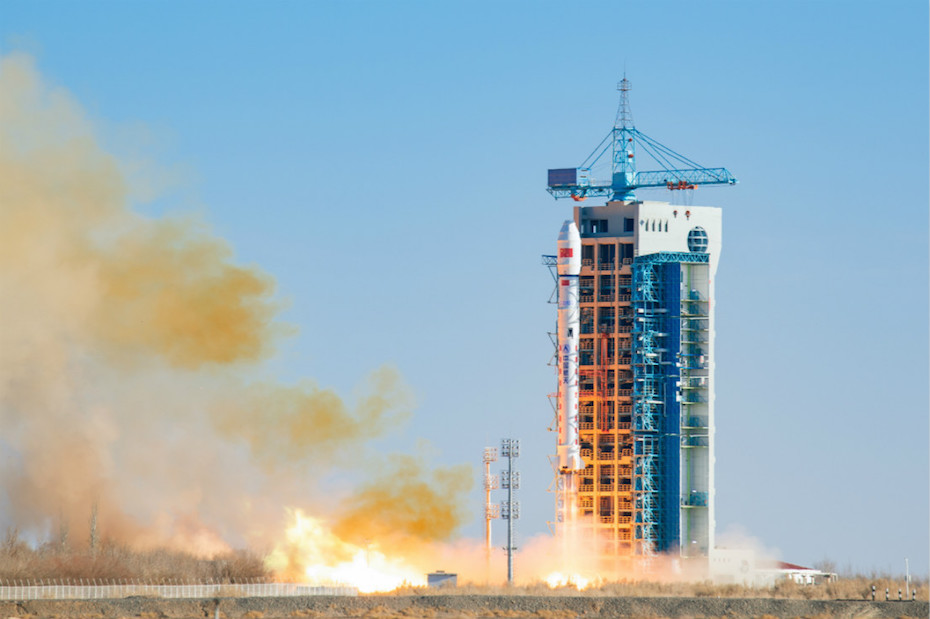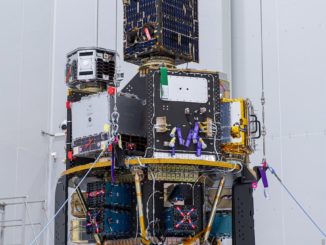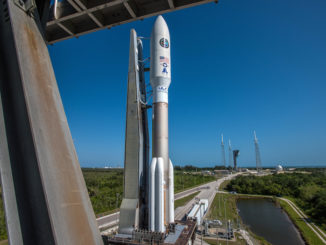
A Chinese Long March 2D booster climbed into orbit from the Jiuquan space base in the northwest of the country Saturday, delivering seven small satellites to space on communications and weather research missions with the help of a new upper stage capable of firing more than 20 times over two days.
With more than 650,000 pounds of thrust, the liquid-fueled Long March 2D rocket took off at 0800 GMT (3 a.m. EST; 4 p.m. Beijing time) Saturday from Jiuquan, a remote military base in the Gobi Desert. Heading toward the southeast, the Long March 2D’s two main stages fired before giving way to a new upper stage to maneuver the mission’s six payloads into two distinct orbits.
The new upper stage, named Yuanzheng 3, is an evolution of the Yuanzheng 1 upper stage used on launches by other Long March rocket variants to inject Beidou navigation satellites into their intended orbits thousands of miles above Earth.
Yuanzheng is the Chinese word for expedition.
While the original Yuanzheng 1 model was capable of missions lasting hours, the new Yuangzheng 3 version can fire more than 20 times and has enough power to operate for more than two days, making it suited for maneuvering clusters of satellites into different orbits, according to the China Aerospace Science and Technology Corp., or CASC, the state-owned prime contractor for China’s space program.
Upper stages like the Yuanzheng 3 can play an important role in launching constellations as smallsats become more prolific in supporting scientific, commercial and military space missions.
In a post-launch press release, CASC said the Yuanzheng 3 upper stage was developed by the Shanghai Academy of Spaceflight Technology, a subsidiary of CASC. The state-owned contractor said the new upper stage, or space tug, “can play an important role in fast and flexible access to space, space maneuvering and space utilization.”
The Yuanzheng is similar in purpose to the larger Russian Fregat upper stage commonly used on Soyuz rockets to launch satellites into different orbits, or to place navigation and communications payloads into orbits high above Earth.
The Long March 2D/Yuanzheng 3 mission launched six identical satellites for the Yunhai 2 atmospheric research constellation, and one test payload for China’s planned Hongyan low Earth orbit communications network.
Three of the six Yunhai 2 satellites were released in an orbit around 320 miles (520 kilometers) above Earth at an inclination of 50 degrees to the equator, and the Yuanzheng 3 boosted the other three into a 680-mile-high (1,095-kilometer) orbit at the same inclination, according to CASC.
The new upper stage did not use its full 20-burn, 48-hour loiter capability on Saturday’s mission.
The Hongyan test satellite, named Chongqing, was also deployed in the 680-mile-high orbit.
CASC said the Yunhai 2 satellites will measure atmospheric environmental factors and the space environment, and help in disaster prevention and mitigation. China released no other details about the satellites or their instrumentation.
The Hongyan test satellite will test L-band and Ka-band communications technologies in orbit to pave the way for a planned constellation to provide global communications services. It’s the second low Earth orbit communications satellite launched by China this month, following the Dec. 21 deployment of a pathfinder for the separate Hongyun broadband network.
No more orbital launches are expected before the end of the year, and 2018 will end with 114 launch attempts, a number that includes two missions that failed reach orbit.
China launched 39 missions to Earth orbit or beyond this year, shattering a record for Chinese launch activity previously set in 2016, when China conducted 22 space launches.
All but one of China’s 39 space launches this year have been successful — the sole exception was the maiden flight of a new commercial launcher developed by Chinese startup LandSpace. China has launched more times than any other country this year, with the United States coming in second with 34 launches, including flights by SpaceX’s Falcon rocket family, United Launch Alliance’s Atlas and Delta fleets, Rocket Lab’s Electron booster, and Northrop Grumman’s Antares space station cargo rocket.
Email the author.
Follow Stephen Clark on Twitter: @StephenClark1.



